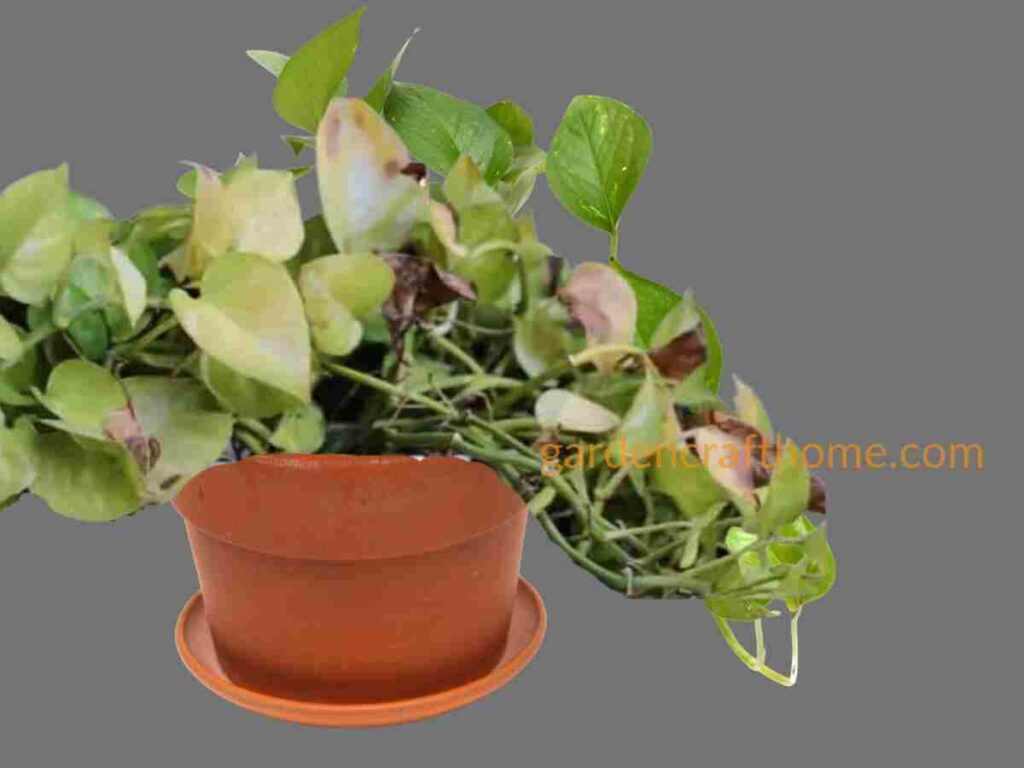To care for Ficus elastica is to make it grow healthy, strong, and beautifully thick.
Have you just gotten a new Ficus elastica, or do you already have one but want to know how to make it better to avoid losing it?
This article aims to give you all the information necessary to start cultivating Ficus elastica, including basic treatment, without getting loose or regretting it.
I also want you to avoid making mistakes, including the ones I made over time. Or the one you have already made before you.
About Ficus Elastica
Ficus elastica is a tree native to tropical Asia; in nature, it can exceed 30 meters, while in pots, it reaches a height of 2.5–3 meters.
The leaves are large and oval, covered with a thick waxy cuticle that protects them from the sun’s rays and heat.
The shoots are initially covered by a reddish protective bract, which subsequently dries out and falls.
How To Care For Ficus Elastica
Light And Exposure
At home, the Ficus elastica should be placed near a bright window, possibly exposed to the south, southeast, or southwest.
By doing so, it will benefit from a lot of diffused light and a few hours of direct sun over 24 hours.
During spring and summer, the ficus should be moved outside to benefit from the abundant light and wind, strengthening the branches.
The important thing is that temperatures do not drop below 13–15 °C.
In the first few weeks, it is advisable to gradually adapt the plant to full sun, perhaps placing it in the shade and slowly moving it to a sunnier place.
For variegated Ficus elastica, such as Tineke and Belize, it is important to ensure good lighting to prevent brown spots from appearing near the variegations.
Remember that the white parts cannot photosynthesize; they are a “debt” to the plant and are the first to be sacrificed when light starts to run low.
Temperature
Ficus elastica thrives at temperatures between 22 and 28°C, considered the ideal range.
However, it remains a very adaptable plant that tolerates minimum temperatures of 13–15 °C and maximum temperatures well above 32°C.
In the winter months, you need to pay attention to sudden changes in temperature and cold air currents because they can cause severe stress and cause the leaves to fall.
In summer, watering must be done closer together so that the plant always has a little water available, especially if it is kept outside.
If we delay watering for a day or two, this will prevent the leaves from getting stained.
When the nighttime minimum temperatures are around 15°C (usually in autumn), you must bring the ficus back into the house and place it in a bright, temperate room.
Humidity
The ideal humidity for Ficus robusta is 65-75%, depending on the temperature.
Fortunately, thanks to the thick waxy cuticle that covers the leaves, it resists very well, even at lower humidity levels.
We can say that a range between 40 and 75% is fine.
Sunlight and humidity influence photosynthesis, meaning we should consider humidity to obtain maximum growth.
When the relative humidity is optimal, the stomata of the leaves reach their maximum opening, and transpiration occurs without effort or resistance.
Instead, when the air is too dry, the plant closes its stomata to slow down dehydration, thus limiting air exchange with the environment.
Fertilization
We care for Ficus elastica by fertilizing it regularly.
Fertilization must be done all year round, with particular importance during the spring-summer period, when the ficus is in active growth.
From April to September, it is necessary to fertilize green plants with a fertilizer every two waterings or with each watering at half the dosage.
During the autumn and winter months, the need for nutritional elements is reduced, and it is sufficient to fertilize once a month.
On the other hand, like me, you may apply a slow-release fertilizer. For six months of coverage, just sprinkle a little amount into the soil at the end of March.
You will no longer have to think about fertilizing and will be able to water with plain water when necessary. In this case, I recommend watering from above and not sub-irrigating.
To learn about the dosage and fertilization method, click here.
Watering
We care for our Ficus elastica by feeding them the proper amount of water.
Ficus elastica should be watered when the soil is dry to allow the roots to breathe between one watering and another.
When watering, make sure you wet the entire clod of earth well.
This alternation of dry and wet allows the root system to absorb the water and oxygen it needs, making growth faster and healthier.
Watering can be done either from above (in the classic way) or by sub-irrigation by pouring water into the saucer and letting the soil absorb it by capillarity.
In this case, ensure the substrate reaches the saturation point and absorbs all the water it can, then pour the remainder from the saucer.
For irrigation, you can use simple tap water left to settle for 24 hours so that it disperses the chlorine inside it.
Ficus elastica tolerates limestone inside it quite well. However, I prefer to use filtered water (with this carafe) or mix the demineralized water I buy at the supermarket with the water at home to reduce its hardness.
Regardless of the amount of limestone in the water, if you dilute it 50% with filtered water, you will get excellent water for almost all plants.
Repotting
We care for our Ficus elastica by repotting. Ficus elastica should be done every 2-3 years when the pot begins to be small, and the roots have colonized a good part of the lump of earth.
Another example is when the soil is poor quality and does not allow for good drainage.
The best time to repot the ficus is in the spring when active growth resumes.
In this way, the roots can colonize the new space available quickly, and the benefits of repotting are maximized.
Nothing excludes being able to repot during the rest of the year, avoiding only the hottest months so as not to cause excessive stress to the plant.
Using airy and draining soil is important to allow for good air circulation within the root ball and prevent prolonged water stagnation. A good mix is made by:
- 60% peat (which we find in universal soils or for green plants)
- 20% Pearlite
- 20% Sand
To learn the Best Way To Repot Ficus Tree click here.
Or simply 2/3 peat and 1/3 perlite, like the one above.
When repotting, I recommend mixing a slow-release fertilizer [aff pro] directly into the soil to provide all the nutrients that Ficus robusta needs.
Or mix some earthworm humus [aff pro], which performs more or less the same purpose.
Pruning
Pruning of Ficus elastica can be done year-round and should be done as needed.
Usually, we begin by cutting off the stem’s apex, which houses the meristem, in order to halt vertical development and compel branching from the buds below.
As we will see shortly, the cut apical portion can be easily rooted and give life to a new plant.
Over time, once the plant has branched, you can move on to thinning cuts or simple trimming to thicken the foliage.
In this post, you can find all of the necessary information on how to prune Ficus elastica. Read now.
The purpose of pruning is not only to shape the plant’s development but also to convey the sap towards the lower buds or the most beautiful and vigorous branches.
Over time, this leads to robust and vital trees with beautiful shapes and dense foliage.
To learn more about the purpose of pruning ficus, read the article on how to prune ficus.
Propagation
Ficus robusta can be easily propagated by cutting and layering.
Cuttings can be made simply by cutting twigs with at least one node and one leaf and rooting them.
New growth will appear from the node, while the leaf serves to carry out the photosynthesis necessary for the cutting to grow.
It is also possible to cut longer apical and intermediate sections.
The cutting can be rooted either in water or in another substrate, such as a mix of soil and perlite or sphagnum moss.
During this phase, it is important to keep the substrate moist and never let it dry; otherwise, the young root tips will dry out and die.
Once the cutting has taken root well, you gradually reduce the watering until it has the first dry period.
From this moment on, it is treated like an adult plant.
An extra step is added if you have rooted the cutting in water. That is to say, the transition from water to soil.
Initially, the plant had only aquatic roots, was free of root hairs, and adapted to an extremely humid environment.
For this reason, once potted, the substrate must always be kept wet (not soaked) for the first 10–14 days, and then the watering should be gradually reduced.
Common Problems
Although Ficus elastica is quite resistant and easy to care for, over time, you can encounter problems that I would define as recurring and, in some cases, even inevitable.
I’m talking about leaf loss, yellowing, and slow growth.
Let’s look at the common problems one at a time:
Ficus loses its leaves.
There are several reasons why Ficus robusta loses its leaves, some of which are completely normal.
The older leaves inevitably fall as time passes, just as it is normal for some to fall in autumn and winter when the light is increasingly lacking.
In other cases, the ficus loses its leaves due to environmental or cultural errors, such as too much water, environmental stress, temperature changes, or parasitic infestations.
The leaves of Ficus elastica turn yellow;
The appearance of leaf chlorosis is very often linked to irrigation errors, such as too much or too little water.
It can also be due to dense soil that holds water for too long, cold temperatures, fungal diseases, and more.
You can find the main reasons why Ficus elastica leaves turn yellow in this post, or learn more by clicking here.
The plant does not grow.
If the ficus does not grow, the problem probably has to do with its metabolism.
When it is cold, there is little light, the plant is not fertilized, or there are serious parasitic infestations, growth slows or stops completely.
In the winter period, it is normal for the plant to “stall,” while if it does not develop in the hot season, one of these four points must be investigated.
Illnesses
Plant diseases are divided into three macro groups: fungal, bacterial, and viral.
Among these three, the approach is the same.
Once any of your plants have an infection, it is necessary to separate them immediately to prevent further spreading.
We can diagnose this issue based on the symptoms and circumstances we see.
Fungal infections proliferate rapidly in humid environments with poor air circulation, that is, when water (even in the form of environmental humidity) stagnates on the surface of the leaves or in the soil.
Symptoms can vary but are often marked by yellow spots on the leaves that dry out and turn brown over time.
Along the edges of the necrosis, where the infection remains active, the tissues remain yellow.
In the case of root rot (always due to a fungal pathogen), the problem occurs at the root level. It is not always easy to identify immediately.
If not from the soil that has been wet for some time.
As the problem worsens, the symptoms spread to the leaves, which turn yellow and brown.
Bacterial diseases are characterized by yellow, watery spots that are sticky to the touch.
They also increase in humid environments and are even more contagious than fungal diseases.
Finally, we have viruses, which are often transmitted by parasites or by using non-sterilized equipment when pruning.
The symptoms are very different and easily confused with illnesses caused by fungi.
Precisely for this reason, we often conclude that they are viral infections only after excluding the latter.
Solution: Treatment of diseases in Ficus elastica
Fungal diseases can be treated with a systemic fungicide, [aff pro], which is absorbed by the plant and transferred into all tissues through its lymphatic system.
In this way, there is total coverage of the entire plant, and its immune system is strengthened.
For advanced infections, it is advisable to spray a cupric fungicide on the foliage.
This has an immediate effect on the pathogen because it acts through contact.
Parasites
Ficus elastica can be attacked by several parasites common to many houseplants, such as:
- Cochineal
- Aphids
- Red spider mites (mites)
- Thrips
- Fungus gnat
The ficus plant becomes food for insects that feed on its sap, causing the plants to suffer from carbohydrate compounds produced during photosynthesis.
Because the parasites feed on our plants, they cause the ficus to become weak in the immune system, making them look sick and slowing down their growth, ultimately leading to death.
In addition to making stings that can potentially become an entry point for spores, bacteria, and viruses.
It might be difficult to notice parasites on the ficus because some are visible, like aphids and cochineal. Why do we only see some when the symptoms arise?
Once you discover any disease or infection in another plant, it is better to isolate them from spreading the disease to others.
Then, you need to follow the advice written below.
Solution: Treatment of parasites
Most Ficus parasites can be fought with treatments based on white or neem oil, sprayed both above and below the leaves.
The treatment must then be repeated ten days later so as also to affect the second generation of insects.
These oils create a film on the leaf that suffocates the insect.
White oil is paraffinic mineral oil, while neem oil is extracted from Azadirachta indica berries and is 100% natural.
I tend to use neem oil as a prevention or to fight small infestations, while in the case of larger insect colonies, I use mineral oil.
A third product, which acts synergistically with these two, is potassium soft soap.
A Quick Overview Of How To Care For Ficus Elastica
We begin this guide with a summary of the fundamental care needed to make Ficus elastica grow healthy and vigorous in schematic form.
If you maintain everything I mentioned above, you will be able to see the plant grow healthy and strong.
Therefore, all its hybrids, such as Ficus Robusta, Tineke, Abidjan, Belize, etc.
- Place the plant in a bright place with lots of diffused light and possibly a few hours of direct sun throughout the day.
- Keep the temperature stable around 20–28 °C, depending on the season. Avoid drafts and sudden changes.
- If possible, move the Ficus elastica outside during spring and summer.
- Water is abundant when the soil is nice and dry, especially in winter. During the warmer months, you can also water a slightly damp substrate.
· Use a green plant fertilizer or a time-release fertilizer to fertilize throughout the growth season, period runs from April to September.
- Repot the Ficus elastica every 2–3 years when the roots have filled the lump of earth.
- To maximize the plant’s photosynthetic capacity and make it more beautiful, clean the leaves from dust.
- To promote more vigorous growth and give Ficus elastica the desired shape, prune it as necessary.
- Carry out a periodic check to identify problems, infestations, or diseases in their early stages when they are easier to resolve. Click here. Learn more about the issues, infestations, or diseases.
After completing this overview, it’s time to delve deeper and examine each need that must be met in order to ensure that the Ficus elastica grows robust and vital.
And not simply make it survive, as happens in many cases.





